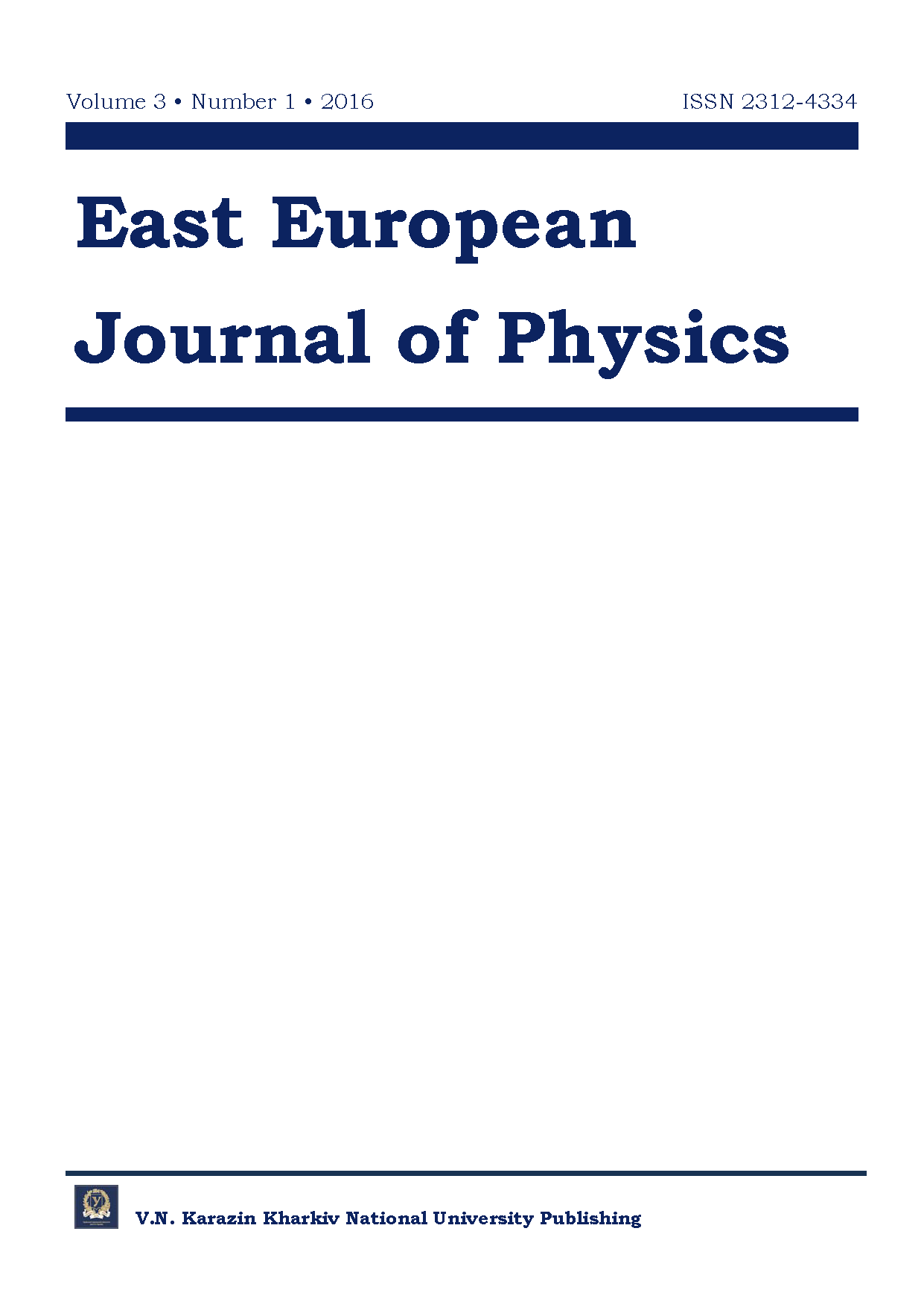THE FEATURES OF THE PHASE TRANSFORMATIONS IN INTERMETALLIC PHASES IN ZIRCONIUM ALLOYS
Abstract
On the basis of experimental data the analysis of phase changes in intermetallic phases in alloys on the basis of zirconium (Zr – 1,03 ат.% Fe; Zr – 0,51 ат.% Fe; Zr – 0,51 ат.% Fe – М (М = Nb, Sn,Ta) is carried out. We used experimental techniques: Mössbauer spectroscopy on 57Fe nuclei in backscattering geometry with the registration of the internal conversion electrons, X-ray analysis, X-ray diffraction and electron microscopy. As a result is found the interrelation between process of growth of inclusions of intermetallic phases and segregation of these phases. The growth of particles derived by phase transformation, recrystallization and interrelated. In our case the detected phase separation of two types, so iron is transferred from one phase to another at short diffusion paths. The kinetics growth of inclusions is not controlled by bulk diffusion, and a lower value of the activation energy of migration of iron atoms can be bound with existence of enhanced diffusion paths and interphase borders.
Downloads
References
Clark R.J.H., Bradley D.С., Thоrnton P. The chemistry of titanium, zirconium and hafnium. – Oxford, 1975. – 434p.
Nekhamkin L.G. Metallurgiya tsirkoniya i gafniya. – M.: 1979. – 324 p.
Gupta K.P. The Nb-Ni-Zr System (Niobium-Nickel-Zirconium) // Journal of Phase Equilibria. – 2000. – Vol. 21. – No. 5. – P. 485–493.
Cox B., Kritsky V.G., Lemaignan C., Polley V., Ritchie I.G., Ruhmann H., Shishov V.N., Bibilashvili Yu.K., Nikulina A.V. IAEA-TECDOC-996, Waterside Corrosion of Zirconium Alloys in Nuclear Power Plants, Vienna: IAEA, 1998. – 313 p.
Shikov A.K., Nikulin A.D., Nikulina V.A. i dr. Sovremennoe sostoyanie i perspektivy razvitiya proizvodstva tsirkoniya i ego splavov i izdeliy iz nih // Fizika i khimiya obrabotki materialov. – 2001. – No. 6. – S.5–14.
Azhazha V.M., V'yugov P.N., Lavrinenko S.D., Lindt K.A., Mukhachev A.P., Pilipenko N.N. Tsirkoniy i ego splavy: tekhnologii proizvodstva, oblasti primeneniya: Obzor // Khar'kov: NNTs KhFTI. – 1998. – 89 s.
Solonin M.I., Reshetnikov F.G., Nikulina V.A. New Construction Materials for Active Zone in Nuclear Power Plants // Nucl. Mater. – 2004. – Vol.25. – P.12–14.
Kirichenko V.G., Kirdin A.I. Yaderno-fizicheskoe metallovedenie splavov tsirkoniya // The Journal of Kharkiv National University, physical series “Nuclei, Particles, Fields”. – 2008. – No.823. – Iss.3(39). - S.25-45.
Khan Ashraf Z., Shapiro E.S., Antoshin G.V., Erivanskaya L.A., Lunin V.V., Minachev Kh.M. Issledovanie sostava poverkhnosti i sostoyanie komponentov v intermetallidakh ZrMo2, ZrW2 i gidridah ZrMo2H0,8 ZrMo2H1,8 // Poverkhnost'. Fizika, khimiya, mekhanika. – 1985. – No.1. – S. 68–73.
Alekseeva Z.M., Korotkova N.V. Izotermicheskie secheniya diagrammy sostoyaniya Zr-Fe-Nb v intervale temperatur 1600-850°C // Metally. – 1989. – No.1. – S. 199–205.
Shishov V.N., Peregud M.M., Nikulina A.V., Pimenov Yu.V., Kobylyansky G.P., Novoselov A.E., Ostrovsky Z.E., Obukhov A.V. Influence of Structure- phase State of Nb Containing Zr Alloys on Irradiation Induced Growth // 14 International Symposium on Zirconium in the Nuclear Industry, ASTMSTP 1467. – 2006. – P.666 – 685.
Martin Dzh., Doerti R. Stabil'nost' mikrostruktury metallicheskikh system. – M.: – Atomizdat, 1978. – 280s.
Authors who publish with this journal agree to the following terms:
- Authors retain copyright and grant the journal right of first publication with the work simultaneously licensed under a Creative Commons Attribution License that allows others to share the work with an acknowledgment of the work's authorship and initial publication in this journal.
- Authors are able to enter into separate, additional contractual arrangements for the non-exclusive distribution of the journal's published version of the work (e.g., post it to an institutional repository or publish it in a book), with an acknowledgment of its initial publication in this journal.
- Authors are permitted and encouraged to post their work online (e.g., in institutional repositories or on their website) prior to and during the submission process, as it can lead to productive exchanges, as well as earlier and greater citation of published work (See The Effect of Open Access).








